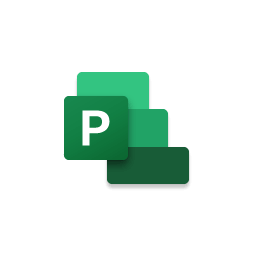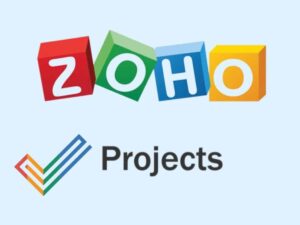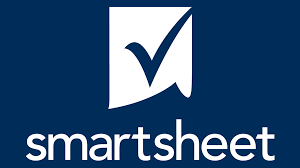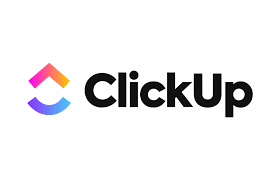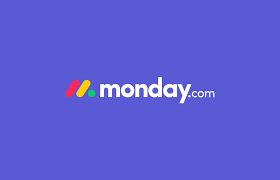Microsoft Project and Hive are two of the most popular project management software services on the market. Each has its strengths and disadvantages relating to project portfolio management tools, complete with file and information sharing, time tracking, resource management, third-party integrations, scheduling features, and more.
Quick Comparison: Microsoft Project vs Hive
Ease-of-use
3/5
4.5/5
Project Mapping
3.5/5
4.5/5
Capacity
5/5
4/5
To-Do Lists
3/5
4/5
Integrations
3/5
5/5
Customer support
3/5
4.5/5
Pricing
2/5
4.5/5
Pros
- Excellent for large businesses
- Power BI for deep analytical insights
- Easy time and task progress tracking
- Integrates with 1000+ apps
- Easy-to-learn chat and file sharing tools
- High number of available views
Cons
- Steep learning curve required
- Average customer support
- Limited integrations with third-party apps
- No search function for each project
- Mobile apps are not as intuitive as desktop version
- File deletion is permanent
Overall Rating
3.5/5
4/5
Microsoft Project vs Hive
Microsoft Project and Hive may be similar services, but they each take a different approach to project management software. We looked at the features and functionality of both to compare them, including:
- Ease of use.
- Project mapping.
- Capacity.
- To-do lists.
- Integrations.
- Customer support.
- Cost.
Ease of Use
Popular project management and portfolio management software Microsoft Project allows a user to choose from several popular views, including board, grid, and Gantt views. Grid views are arguably the most basic, converting any project into a simple ordered list of tasks with status and due dates and not much else. Another view, Kanban, offers heavy visuals, converting tasks into boxes that can be dragged and dropped to rearrange the order, drag its duration, and more.
Like Microsoft Project, many user reviews have praised Hive project management software for its intuitive platform. It offers six views, including status, team, calendar, label, Gantt, and table. Of the six, Gantt and table view are the most popular, with each functionality offering its benefits on the way teams view and process work.
Another benefit of Hive technology is the ability to convert workflows to different views. Users can flip projects from Kanban to project views and vice versa. Hive also offers mobile apps to be able to check-in when on the go.
Winner: Hive is simple to use, offers plenty of diversity, and is easy on the eyes and mind.
Project Mapping
Microsoft Project offers excellent project mapping and portfolio management functionalities designed to show every step and all processes from project start to finish using flow charts. For starters, it offers an auto-scheduled feature that automatically maps out a calendar for your project by entering scope and designated time frames for each task. Consider this one of the more useful tools for project managers.
It also allows users to create “Master Project Plans” that combine multiple project details into one centralized workspace for a higher-level overview. Subprojects can be tied to master projects, all of which can be viewed using Gantt charts, grid views, and board views.
Hive also offers outstanding project mapping and portfolio management tools, starting with its six views mentioned above. Two of its core methodologies are Kanban and Agile. Kanban boards are a highly visual representation of workflows using customizable task cards flipped to either a Not Started, In Progress, or Completed status. They can be easily dragged and dropped with every status change.
Winner: Hive has a much more simplified interface, a higher number of available views, and easier toggling between different views.
To-Do Lists
Hive offers a comprehensive to-do list feature with milestones. It starts by entering tasks using your “My Actions” list and selecting due dates. Each to-do item is full of options, including the ability to create sub-actions, link a dependent action, and contribute to each task by uploading attachments, adding comments, using action templates, and generating share links for other members of your organization to view.
If to-do lists are an important functionality for you, Microsoft Project has very robust tools. All users have the option to start a to-do list using a blank project file, easily converting them into projects and shareable files. Once tasks are added, a user can indent and outdent tasks to show hierarchy, link tasks to show relationships, and change views.
Winner: Microsoft Projects offers a slightly more simplified to-do list feature than Hive.
Read:
Want to know what happens when you compare ClickUp vs Microsoft Projects? Read our detailed comparison here.
Integrations
Microsoft Project offers a healthy number of integrations for collaboration, most notable with popular Microsoft Office apps Word, Excel, Teams, Outlook, OneNote, and Powerpoint. This allows users to centralize work from multiple apps into one centralized dashboard at the same time.
Hive is very strong with integrations and can connect to third-party applications using the popular Zapier app or native APIs. Some of the more popular apps include Outlook, Salesforce, and Google Drive. Integrations streamline work quickly, for example, a Zoom integration allows users to use video conferencing directly from Hive messaging, eliminating the need to share links to a meeting.
Winner: Hive offers integrations with a lot more apps than Microsoft Project, including the most popular ones (e.g. Google Drive, Salesforce, Slack, Microsoft Teams) and lesser-known ones such as Freshbooks for accounting and Marketo.
Customer Support
Microsoft Project has a wide-reaching project community and support resource page that offers online webinars, documentation, videos, white papers, forums, and tutorials on all things Microsoft Project-related. While chat training is offered, there is a heavy reliance on self-help resources, with customer service numbers or dedicated emails harder to come by.
Hive’s customer support options for all project management software features are more visible than Microsoft Project. Users have the option to connect directly to their sales team using an online form where you can ask about anything from integration features to reports. Hive also offers a dedicated service email ([email protected]) and an on-site webchat assistant also fields questions from new and repeat visitors.
Users also have the option to sign up for a free trial and request a demo. Hive technology offers personalized demos for all types of businesses. Simply fill out the form on the website with your contact information for a customer service representative to get back to you.
Winner: Hive offers the most generous customer support of the two. In addition to online chats and a dedicated phone line for Teams and Enterprise level users, a sales team is on standby to walk new users through a free demo with separate options to request a free trial.
Pricing
Microsoft Project offers two plans for on-premise solutions that use licenses and three package plans for their cloud services:
- Project Plan 1 ($10 per user per month) offers Microsoft Project’s basic features, including management of projects, tasks, and reports that do not need any advanced features.
- Project Plan 2 ($30 per user per month) includes all of the features of Project Plan 1, with the ability to assign project tasks to resources and use the desktop app, with one license good for up to five PCs per person.
- Project Plan 3 ($55 per user per month) offers all of the features of Project Plan 1 and Project Plan 2 with the addition of enterprise-level analytics and resource management tools.
Both on-premise solutions require a one-time fee and allow access to its desktop app, with one license covering one PC per person. It has a lot more robust features, including the ability to connect with Project Online and Project Service, the offering of advanced analytics to choose project proposals based on strategic goals, and other solutions for larger enterprises.
Hive offers a much more simplified plan and pricing structure than Microsoft Project. It offers three plans paid in monthly or annual installments:
- Solo (free) allows access for up to two users with unlimited service and a community support function.
- Teams ($12 per user per month) is for unlimited users with unlimited storage and time tracking, with the option to add a-la-carte options such as team resourcing and SSO, enterprise security, and controls for $4 per user per month.
- Enterprise (custom quote) is the most robust, offering all of Teams’ features with the addition of contract and legal review and the most flexible add-on options like team resourcing and the ability to add external users as part of the package.
Winner: Hive is the clear winner in this category, thanks to its overall cheaper cost and ability to add a-la-carte options for a small nominal user fee per month. It does not overcomplicate pricing plans by splitting cloud versus on-premises (desktop licenses) plans like Microsoft Project, making it less overwhelming for new users or smaller companies.
Overall Winner
In the battle of Hive vs Microsoft Project for small to medium size businesses, our nod goes to Hive. Microsoft Project has a gargantuan infrastructure, yet has many limitations, most notably with collaboration and the ability to share files.
Another key consideration is cost. Hive is considerably cheaper on a per-user per month basis.
All in all, Hive is better served for a small to a medium-sized organization that does not want a steep learning curve in learning a new project workflow tool.
Frequently Asked Questions for Microsoft Project vs Hive
Final Thoughts on Microsoft Project vs Hive
Microsoft Project and Hive are two of the most powerful project management tools on the market. Each offers its own advantages and disadvantages when we compare ease of use, project mapping, to-do lists, integrations, customer support, and cost.
Consider Hive the superior option when it comes to the learning curve, real-time collaboration tools, and overall simplicity with a heavier reliance on cloud-based apps and third-party integrations to bring the workforce closer together.
 Sections of this topic
Sections of this topic

